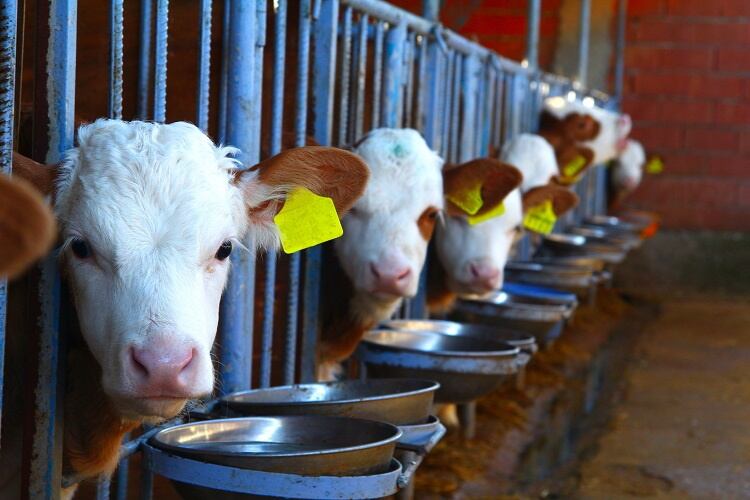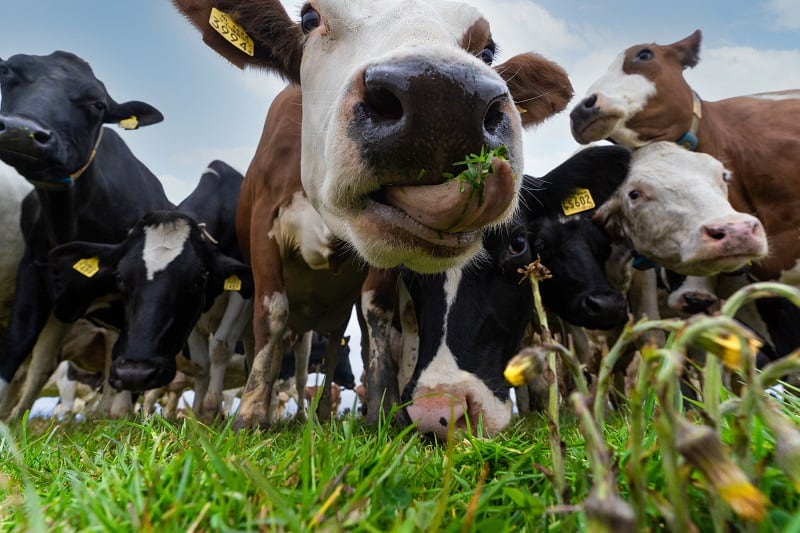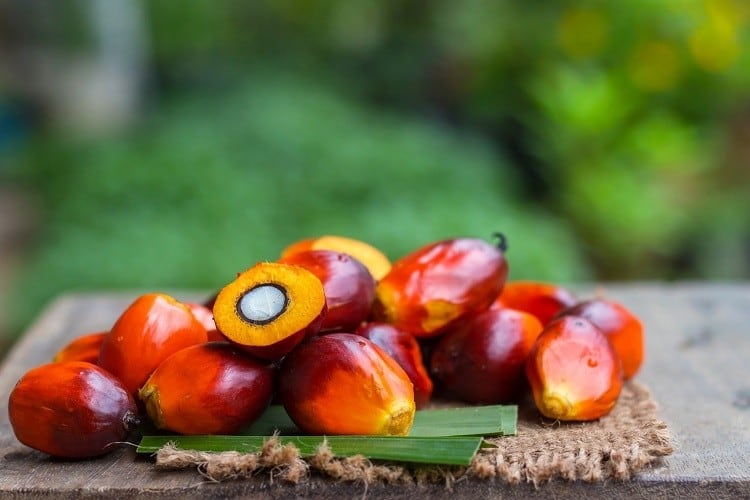Dairy ingredients account for more than 50% of Ben & Jerry’s total greenhouse gas emissions, it estimates. The company is therefore focusing on dairy farms as the best opportunity to reduce its carbon footprint.
The ‘three critical aspects’ of dairy farming
Around 80% of total methane emissions are enteric, meaning the cows are burping methane gas during rumination, which is a natural process for all ruminant animals. The remaining 20% is emitted from manure stored in anaerobic conditions.
‘Project Mootopia’, as the pilot has been dubbed, will use regenerative agricultural practices and new technology to address three critical aspects of dairy farming.
First up are enteric emissions, also known as cow burps. The project will support more and better grazing strategies; give cows a high-quality forage diet through improved mowing strategies; and introduce ‘innovative’ feed additives to modify conditions in the cows’ rumen and reduce the generation of methane as cows digest their food.
Next, farmers will put manure, which also produces methane, through digesters and separators. It is expected this approach will reduce emissions and create resources such as energy and fertilizer.
Finally, farms will employ regenerative practices to grow more grass and other feed crops help maintain healthy soils, increase carbon sequestration, lower synthetic inputs, promote biodiversity, and raise the amount of homegrown feed eaten by cows.
Ben & Jerry's stressed the project – which will happen at 15 farms in the US and the Netherlands – is a collaboration between dairy farmers, scientists, academics, and researchers in the US and in Europe.
It’s being backed by $9.3 million from parent company Unilever’s Climate and Nature Fund. It will help the company meet the emerging demand for ice cream that is 'climate friendly and socially just', it said.

Targeting the causes of climate change ‘at source’
Taylor Ricketts of the Gund Institute for Environment at the University of Vermont, one of the project’s advisors, complained that too often corporations claim to be carbon neutral by buying carbon offsets from somewhere else. “Ben & Jerry’s is taking a more meaningful and direct approach,” he said, by “attacking the systemic causes of climate change in its own supply chain to achieve measurable, Science Based Targets. Ben & Jerry’s is walking the talk.”
By using technology, innovation and regenerative agricultural practices there is a 'huge opportunity' for the ice cream brand to address the source of its GHG emissions, according to Klaas Jan van Calker, Global Sustainable Sourcing Manager at Unilever.
“If we want to improve the impact of dairy farming, we need to look at how we can shape the future of the food system to promote sustainability, and understand the role dairy can play in that,” he told this publication.
“We’ve been working with the Universities of Vermont and Wageningen for a few years to explore regenerative agricultural practices such as cover cropping, no till, and crop rotation,” he explained.
This includes looking into the viability of other practices to reduce synthetic inputs and promote biodiversity. Circular dairy farming, the sustainable sourcing manager observed, means that instead of competing with food production 'we work with them to use marginal grasslands and food waste as ingredients for cow feed'. Additionally, feed crops can be included in rotation of arable and vegetable farms in return for manure.
As a result of this, 'dairy can then become an integral part of a food system for the future,' van Calker revealed.
A focus on local feed
The project will explore too the introduction of other crop rotations - particularly nitrogen fixers such as pea - to boost soil health on farm. “The focus of the project is indeed on ways how we can replace commercial fertiliser,” said van Calker. “This can be done by having more diverse grasslands, including herbs and clover that can fix to nitrogen from the air."
The sustainability expert continued that the project also wants to shorten the feed supply chain. "The ambition is to produce as much feed as possible, with locally produced protein as part of the equation.”

This will be more the case at the Netherlands-based farms, where the venture wants to maximize local production as much as possible to eliminate long supply chains, focusing predominately on European feed.
In the US, on the other hand, the focus is on increasing the quality and amount of grass in the diet as well as growing a larger percentage of the overall diet on the farm. “For additional feed imported from off the farm, we will look to source from growers implementing regenerative practices,” the ecologist explained.
The geographical diversity of the widely scattered farms will greatly influence the project and any future plans that emerge from it.
Ben & Jerry’s has a wide variety of dairy farming systems in its milk pool, including different types of soil (e.g. sand, clay and peat), landscapes (e.g. open and hedgerows) and farming styles (e.g. high tech and nature inclusive). Those that are on marginal soils (e.g. peatland) allow only grass production.
In other regions, Ben & Jerry’s hope is for dairy farming to support arable and vegetable farming, and thus become part of a mixed farming system of the future.
There is no one size fits all approach, van Calker surmised.
“We will develop a toolbox of interventions, including management measures and technologies, that farmers can use to reduce their carbon footprint by 50%. The interventions will then be dependent on the landscapes they are working with. Where possible, we’ll always actively try to integrate dairy farming in arable and vegetable farming systems, but on other landscapes the focus will be optimising grass use, if no other crops can be grown.”
What about production costs?
Regenerative practices and new technology could be a ‘game changer’ for dairy farming, believes Ben & Jerry’s. If proven these initiatives will be expanded to farms across the ice cream brand’s global dairy supply chain. But in terms of costs, it has yet to estimate what financial impact these adjustments will have.
“We will be evaluating this closely as the participating farms adopt different practices,” van Calker said.



